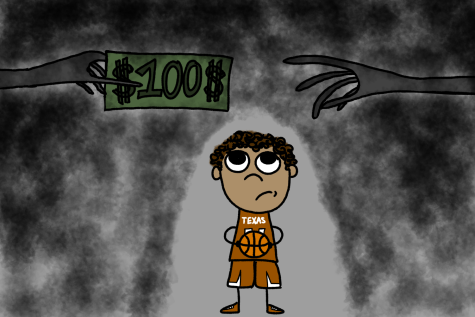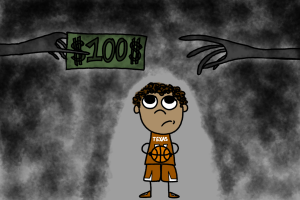Embracing culture through film as a tool for social change and healing
February 17, 2023
Editor’s note: This column was submitted by a member of the UT community.
To talk about cultural identity is to talk about love, fear and everything in between. What does it mean to hang a Mexican flag in my room while I try to fake an American accent to please those who criticize us?
Throughout the last seven years, I have struggled with coming to terms with my cultural identity. As a Mexican immigrant, the perception of what it means to be from one place has been shattered by the sole act of immigrating. With that also comes external factors such as the rise in discrimination toward cultural groups including, but not limited to, Latinos/as. Yet, I find this concept to be absolutely fascinating and one that has spurred the creative juices in my work as a student filmmaker.
Despite having identity issues since my arrival in the United States, I have grown into loving who I am and allowing myself to be vulnerable to share it with others. However, that did not happen until recent years. The first few years living in the U.S. as an English as a Second Language student were some of the loneliest times of my life. However, the diversity found in that very same ESL class left me speechless. The realization that the world I was living in prior to migrating was just a small part of life was simply mind-blowing. Then came the act of cultural exchange, something I fell in love with.
One would think that there are more differences than similarities between someone from Latin America and Pakistan; however, the beauty of this country is finding out how similar we can be. I have a Pakistani friend I met in high school, and I talked to him about a childhood toy I used to play with called a “trompo” (spin top), only to find out that Pakistani children have their own versions of it to play with. Simply fascinating.
My experiences as an ESL student then led to my latest short film for the Filmmaking to Decolonize class last semester. “I’m New” explores themes like immigration, discrimination, assimilation and the embrace of identity. I wanted to share this story about the immigrant and ESL student experience with people, but most importantly, I wanted to add the representation of such a niche student sub-group. As a rising media scholar, I notice that Latinos/as are poorly represented in mainstream media not only in the United States, but also in my native Mexico. While Hollywood shows mistaken and incomplete portrayals of Latin Americans that lead to stereotypes, Mexico still denies its indigenous heritage and aims to portray an almost “Scandinavian-like” country, with the majority of the actors in film and TV being white. That is extremely problematic considering that over 90% of the country has indigenous roots.
Therefore, I am very excited to be one of the leading Latino filmmakers of my generation to attempt to create the representation we deserve. I hope to fight for an equal ground for all of my Latin American and Hispanic brothers and sisters searching for opportunities in such a hard industry to break into. I find myself doing this work at UT already, with the radio-television-film department being a majority of white students.
So, I simply encourage everyone to reflect. A lot. Find the beauty within yourself and use your craft as a vessel to start healing. Surprisingly, people will accept your work and find a way to relate to it. Remember that, according to the wise words of Guillermo del Toro, it isn’t art if it does not hurt.
Smith is a radio-television-film junior born and raised in Mexico City.









